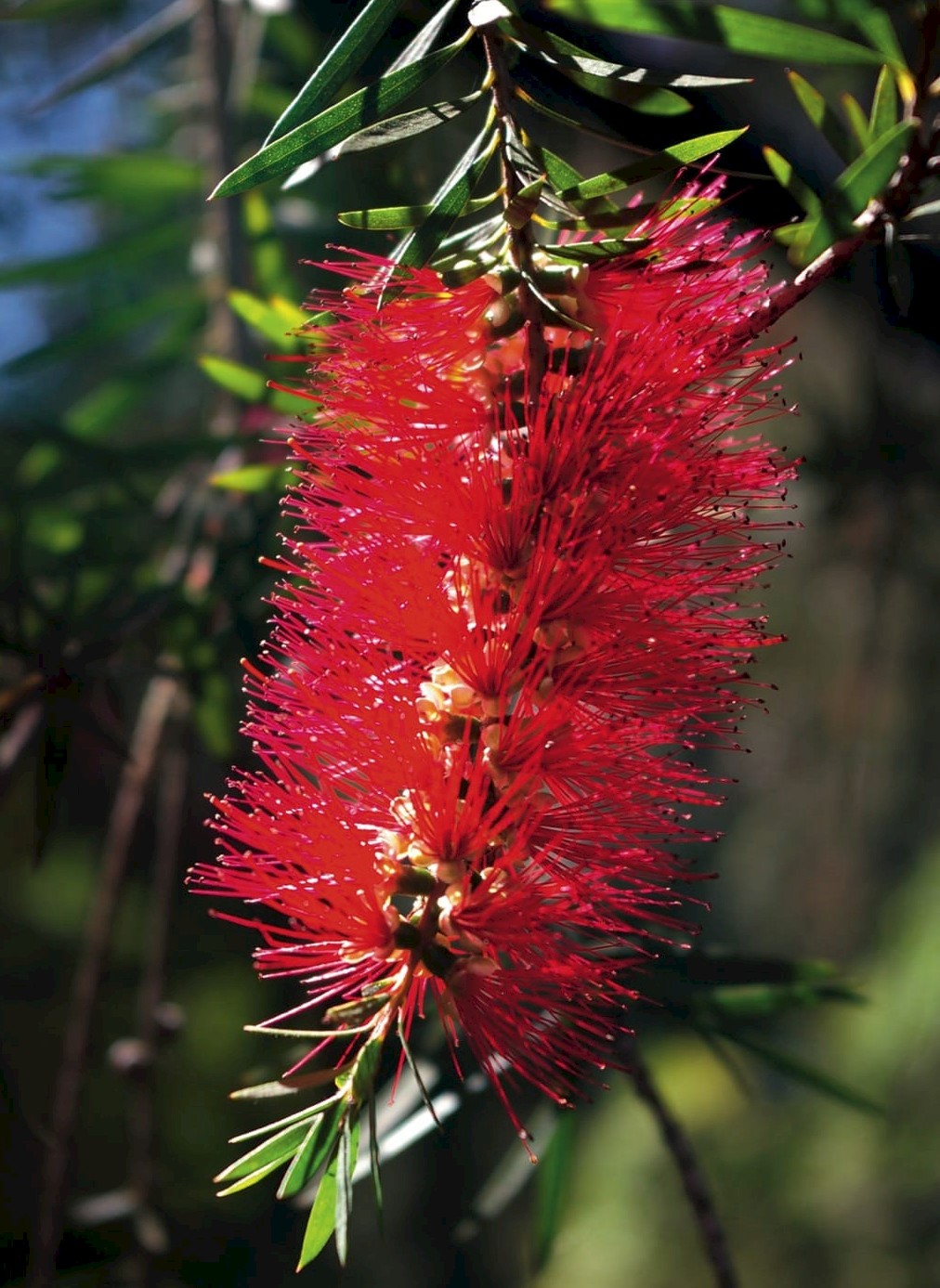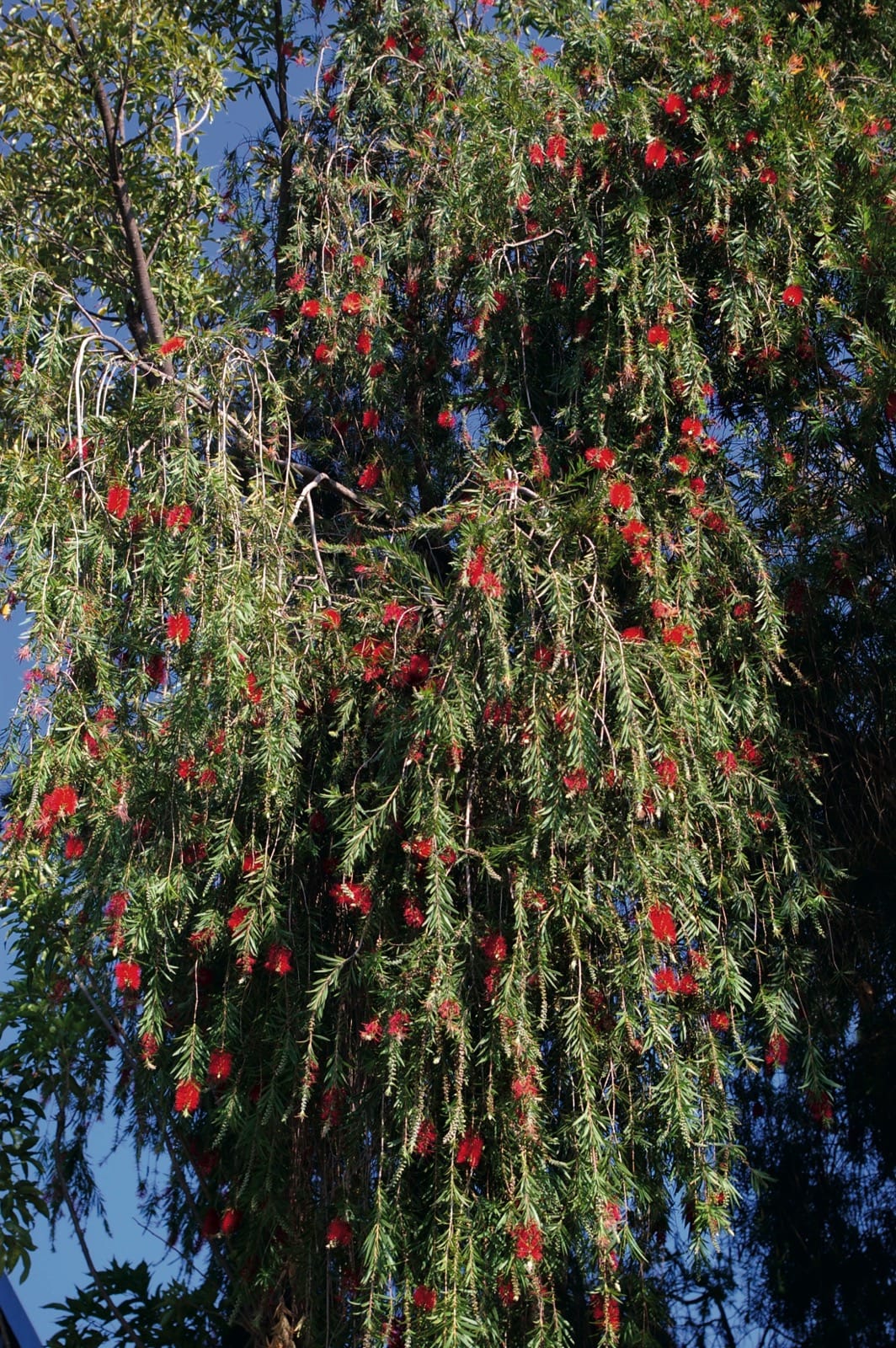Callistemon viminalis
Credits
Article from New Trees by John Grimshaw & Ross Bayton
Recommended citation
'Callistemon viminalis' from the website Trees and Shrubs Online (treesandshrubsonline.
Genus
Common Names
- Weeping Bottlebrush
Shrub or tree 1–12 m. Bark grey, deeply fissured. Branchlets pendulous. New growth covered in silky hairs. Leaves stiff, spreading or appressed, 2–6.5 × 0.5–1 cm, linear to lanceolate, dull, dark green, bearing numerous oil glands, margins entire, apex acute; leaves sessile or with a poorly differentiated petiole. Flower spikes 5–20 × 3–6 cm. Flowers bright red to pink, widely spaced; calyx and corolla pale green, rachis densely tomentose. Capsule cup-shaped, 0.4–0.5 cm diameter; seeds not retained after flowering. Flowering September to December (Australia). Elliot & Jones 1982, Mitchem 1993. Distribution AUSTRALIA: New South Wales, Queensland. Habitat Occurs along the banks of watercourses. USDA Hardiness Zone 9. Conservation status Not evaluated. Illustration Mitchem 1993; NT180, NT181. Cross-reference K257.
Callistemon viminalis is one of the most beautiful of flowering trees, combining a graceful habit with an abundance of bright red bottlebrush inflorescences. Whether with sunbirds in Africa or hummingbirds in California, a flowering tree in warmer places is constantly abuzz with small, flower-feeding birds that greatly add to its charm. Unfortunately these do not occur in northern Europe, and C. viminalis is not particularly successful here either, despite being freely available in the nursery trade (including a number of selected cultivars). The only specimen recorded by TROBI is a 3 m individual at Sidmouth, Devon, but it is probable that it is grown quite widely in private gardens in southern and western England. Summer heat would seem to be the most important factor in its success, enabling ripening of the new growth, as it does well in both the southeastern United States and in California, at least as far north as San Francisco.
Callistemon viminalis is among the species predicted by the Royal Horticultural Society to be a success in years to come if the climate of the British Isles continues to warm, and it is listed among their ‘Opportunities for Gardeners’ selections (Royal Horticultural Society Learning 2008), alongside species such as Acacia dealbata and Melia azederach that are already showing their appreciation of our warmer summers.


